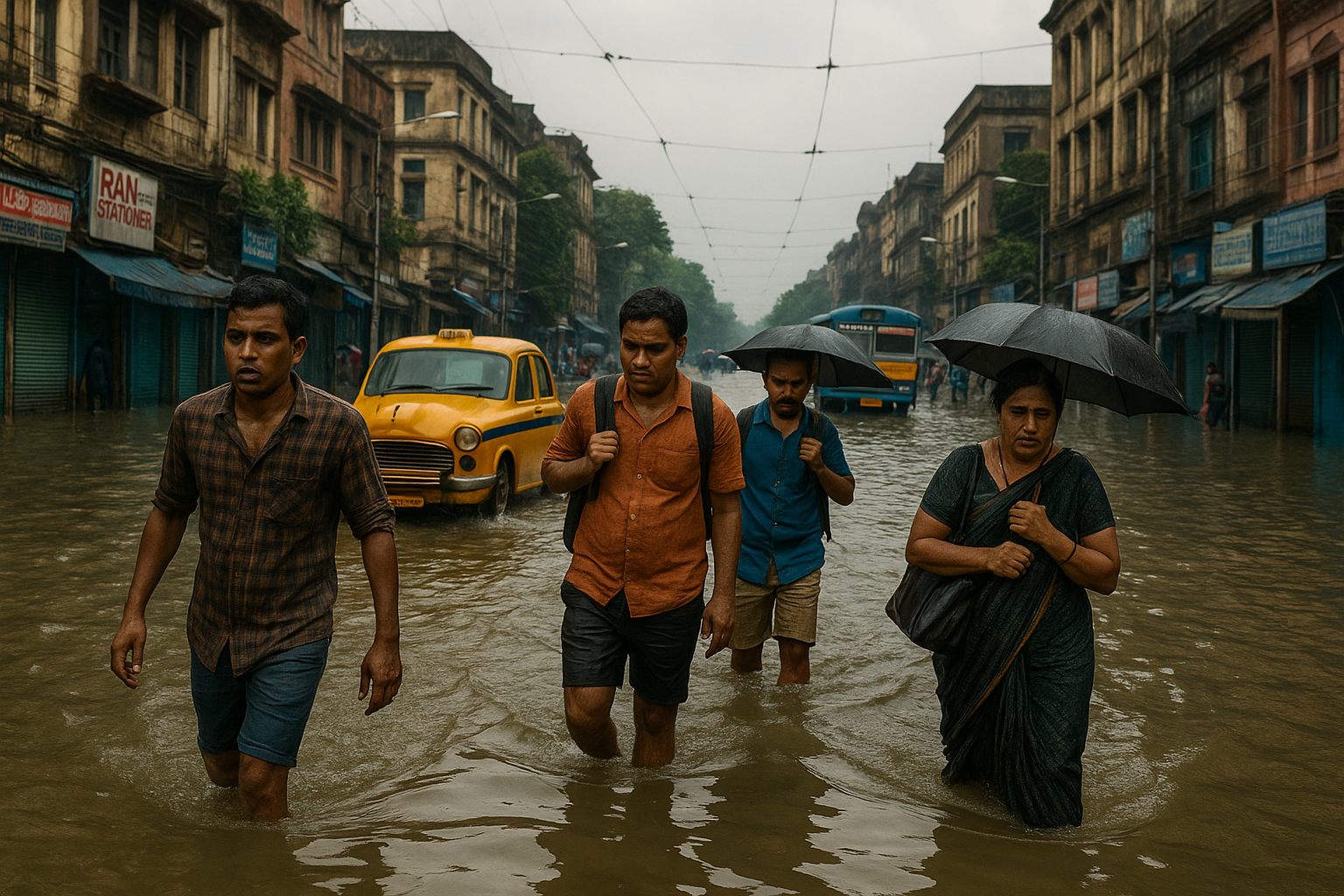
In Pics: Kolkata Struggles After Heavy Rainfall Leaves City Waterlogged, Claims 10 Lives
Kolkata witnessed one of its most severe rain spells in decades as the city received 251.4 mm rainfall in just 24 hours on Tuesday, marking the third-highest single-day rainfall in September. The torrential downpour triggered massive waterlogging across key areas, disrupted transport services, damaged property, and tragically claimed at least 10 lives.
Deadly Consequences of Torrential Rain
Among the 10 fatalities reported, most victims died due to electrocution after coming in contact with live wires submerged in waterlogged streets. Residents stepping out for their daily routines on Wednesday morning faced immense risks, as stagnant water continued to cover major roads and low-lying neighborhoods.
The unprecedented rainfall not only disrupted everyday life but also exposed gaps in urban planning and drainage management. With the city’s infrastructure overwhelmed, emergency teams were pressed into service to restore normalcy.
Transport Network Paralyzed
Kolkata’s transportation system came to a near standstill as railway tracks, Metro stations, and main arterial roads were submerged. Several cars broke down on flooded roads, adding to traffic chaos. School buses and pool car services were canceled, leaving thousands of students unable to attend classes. Many schools formally advised parents to keep their children at home.
In response, several offices across the city declared work from home arrangements, as commuting was nearly impossible. Daily wage workers, however, bore the brunt of the disruptions, struggling to make ends meet amid the chaos.
Schools and Offices Hit Hard
The downpour forced schools and colleges to suspend classes. Education institutions highlighted safety concerns for children and staff, while businesses sought temporary remote work solutions. Many employees reported power outages and internet disruptions, further complicating the situation.
For thousands of families, the inundation of homes in low-lying areas worsened hardships, with furniture, electronics, and essential household goods damaged by floodwaters. Relief efforts, including water pumping and rescue operations, were swiftly undertaken by the city’s civic body.
Historical Context: A Record-Breaking Spell
Tuesday’s 251.4 mm rainfall was the third-highest single-day rainfall for September in Kolkata’s history. It comes after the record 369.6 mm recorded on September 28, 1978, and 259.5 mm on September 26, 1986.
When compared across all months, this rainfall event stands as the sixth-highest single-day rainfall in Kolkata’s records, underlining the severity of the situation. Meteorologists highlighted that such extreme weather is becoming increasingly common, likely linked to climate change and monsoon unpredictability.
City Limping Back to Normalcy
While the India Meteorological Department (IMD) ruled out the possibility of heavy rain over the next 24 hours, several pockets of the city remained submerged in knee-deep water on Wednesday. Pumping operations were initiated on priority in vulnerable zones, including residential areas, marketplaces, and stretches of the Metro network.
Civic officials expressed confidence that the city would gradually return to normal, but many residents voiced concerns about recurring flooding and the need for long-term flood-resilient infrastructure.
Lessons from the Floods
The calamity has once again brought the spotlight on Kolkata’s outdated drainage system. With urbanization growing rapidly, experts argue that stormwater drains must be modernized to handle such intense rainfall events. Citizens also stressed the importance of better coordination between the electricity department and disaster response teams to prevent electrocution deaths in future.
A City Tested by Rain Fury
For Kolkata, the latest episode of flooding serves as a reminder of its fragile infrastructure against climate extremes. The resilience of its people was evident as communities came together to help each other—whether by providing food to stranded commuters, offering shelter to neighbors, or clearing blocked drains in residential lanes.
As the city recovers, questions on preparedness, urban resilience, and disaster response will continue to dominate conversations. With September rains historically known to bring heavy showers, experts warn that Kolkata must prepare better to protect its citizens and minimize future losses.




